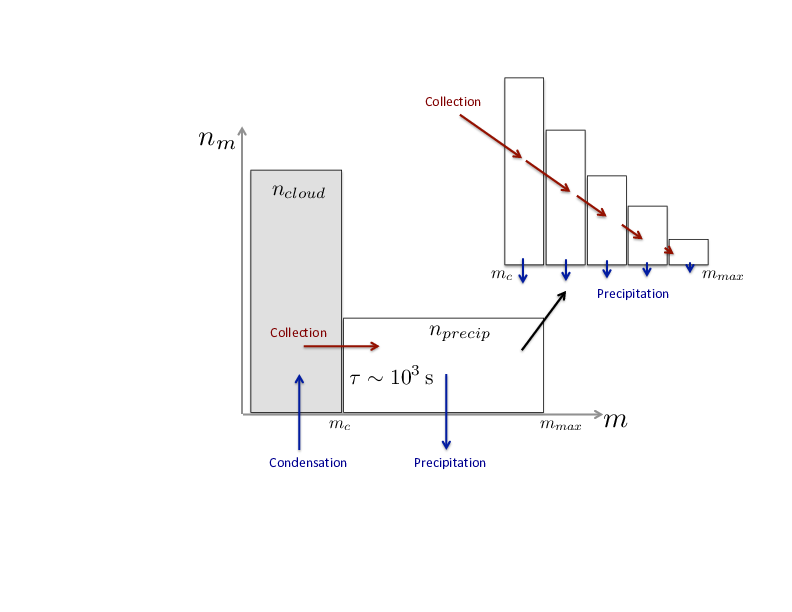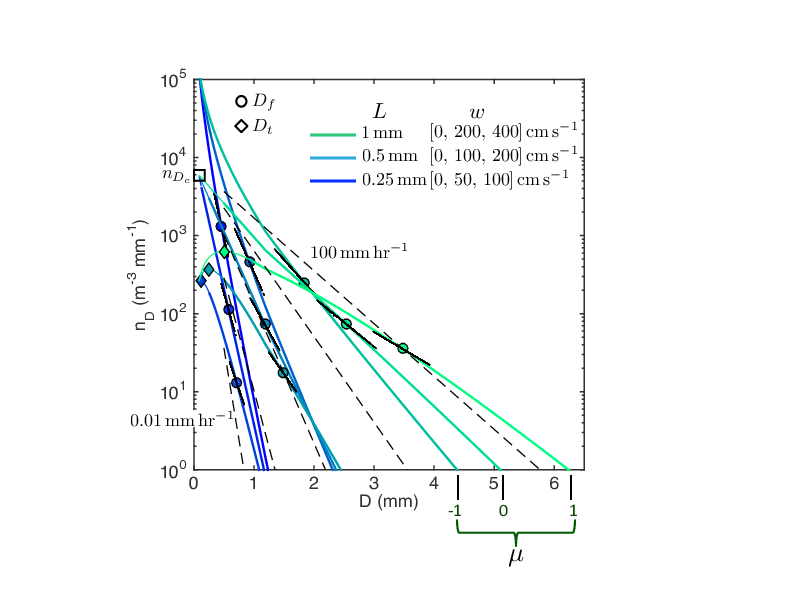Precipitation size distributions as an analytical function of updraft velocity and cloud depth
Submitter:
Garrett, Timothy J. — University of Utah
Area of research:
Cloud Distributions/Characterizations
Journal Reference:
Science
A simple explanation that is consistent with observations is provided for what determines how many rain drops fall of varying sizes. A key parameter is the ratio of updraft velocity to how much water is in the cloud.
Impact
Observations were first made of the numbers and sizes of raindrops and snowflakes in the 1940s, germinating the question of why it is that their size distributions take on a particularly simple mathematical form. This study helps to resolve the problem with a straightforward derivation that can be used to link the sizes of precipitation particles -- whether small drizzle or heavy rain -- to the types of clouds that formed them.
Summary
Analytical solutions are derived for the steady-state size distributions of precipitating rain and snow particles assuming growth via collection of suspended cloud particles. Application of the Liouville equation to the transfer of precipitating mass through size bins in a “cascade” yields a characteristic gamma distribution with a Marshall–Palmer exponential tail with respect to particle diameter. For rain, the principle parameters controlling size distribution shape are cloud droplet liquid water path and cloud updraft speed. Stronger updrafts lead to greater concentrations of large precipitating drops and a peak in the size distribution. The solutions provide a means for relating size distributions measured in the air or on the ground to cloud bulk microphysical and dynamic properties.



